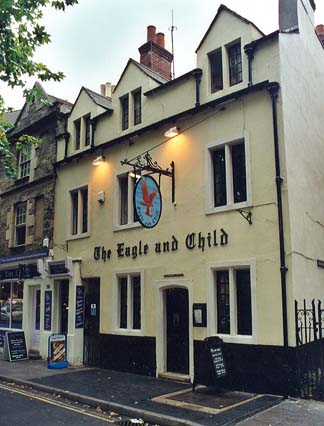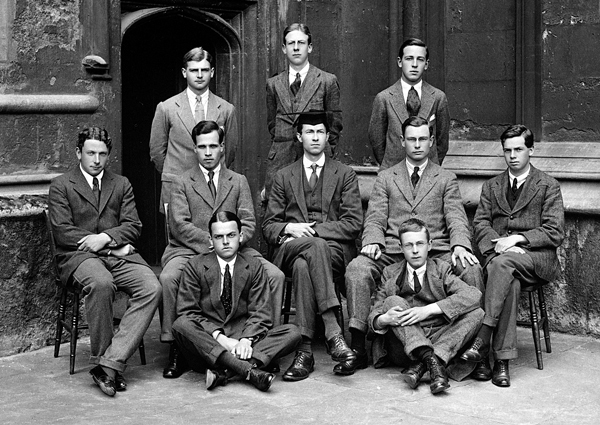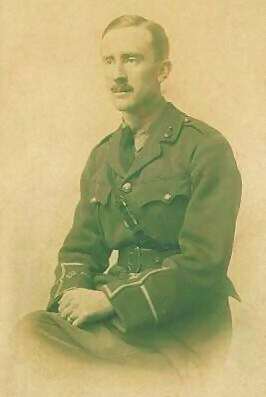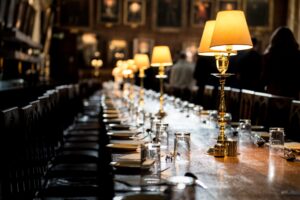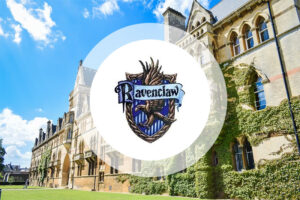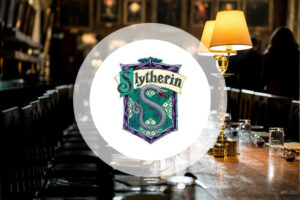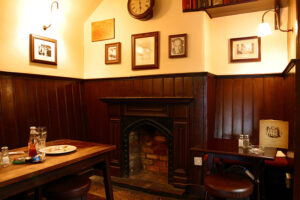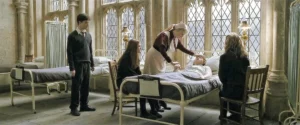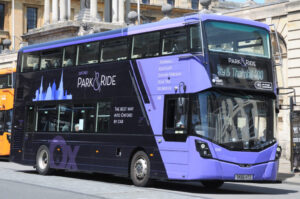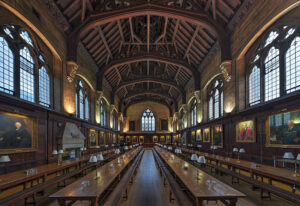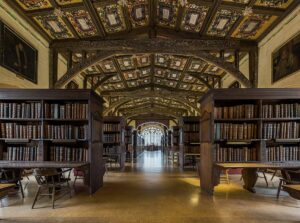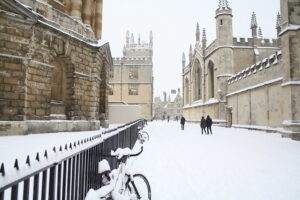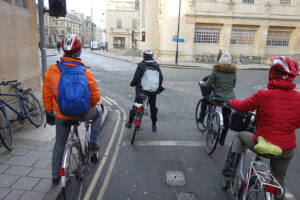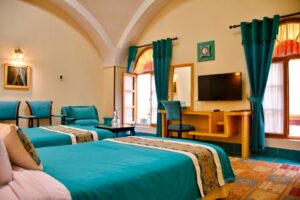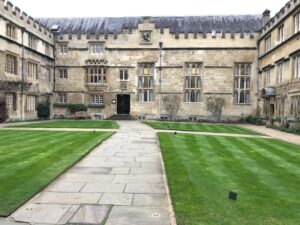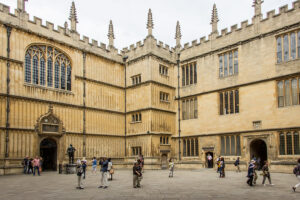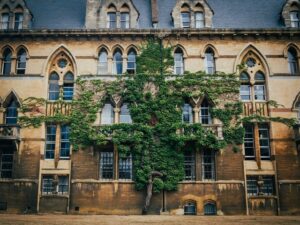The Inklings were an informal literary discussion group that met regularly at the University of Oxford during the 1930s and 1940s. The group included prominent writers and scholars such as J.R.R. Tolkien, C.S. Lewis, Charles Williams, and others. The group provided a supportive and stimulating environment for its members, fostering creativity and collaboration, and exerted a significant influence on the development of fantasy literature during the 20th century.
The Inklings would gather in various locations around Oxford, most famously at the Eagle and Child pub, to share and discuss their literary works-in-progress, offer critiques, and engage in intellectual debates.
Amidst the warm glow of the hearth, they would eagerly share excerpts of their latest literary endeavors, ranging from epic tales of Middle-earth to philosophical treatises and theological musings. Each member contributed their unique insights and perspectives to help refine and enrich their peers’ works, too. So, let me tell you a little more about the Inklings, their unparamounted influence on literature, and how you can follow their footsteps today.
How Did The Inklings Begin?
The origins of the Inklings can be traced back to the friendship between C.S. Lewis and J.R.R. Tolkien, two esteemed scholars and aspiring writers who shared a passion for literature, mythology, and language. Their friendship blossomed during their time as colleagues at Oxford University, where they both taught and conducted research.
The Inklings formally emerged as a literary group in the early 1930s, with Lewis and Tolkien at its core. The group expanded to include other like-minded individuals, such as Charles Williams, Owen Barfield, and Hugo Dyson, among others.
The name “Inklings” was suggested by Tolkien and is said to have been derived from Lewis’s description of them as “a round-table of friends.”
The Inklings Structure and Members
Though the Inklings never had an official membership or formalized structure, their meetings became a cherished tradition among its members, enduring until the late 1940s.
“For the Inklings, language is not a communication tool but rather a portal into being – an invisible reality summoned into our world through the shape and sound of words. Properly speaking, words are incantations.”
The Inklings primarily centered around the core members, which included:
J.R.R. Tolkien: Renowned author of “The Lord of the Rings” and “The Hobbit,” Tolkien was a key figure in the group, known for his expertise in philology and mythology.
C.S. Lewis: Acclaimed author of “The Chronicles of Narnia” series and numerous other works of fiction and non-fiction, Lewis was a close friend of Tolkien and a central figure in the Inklings.
Charles Williams: Poet, novelist, and theologian, Williams contributed a unique perspective to the group with his mystical and theological writings.
Owen Barfield: Philosopher, author, and close friend of C.S. Lewis, Barfield was known for his philosophical insights and literary criticism.
Hugo Dyson: Lecturer in English at Oxford University, Dyson was a frequent participant in the Inklings’ discussions and debates.
Nevill Coghill: Professor of English at Oxford University, Coghill was known for his expertise in medieval literature and his contributions to the Inklings’ meetings.
Warren Lewis: Brother of C.S. Lewis, Warren was a frequent attendee of the Inklings’ gatherings and provided valuable insights into his brother’s works.
Christopher Tolkien: Son of J.R.R. Tolkien, Christopher occasionally attended the Inklings’ meetings and later became known for his editorial work on his father’s unpublished manuscripts.
Where Did The Inklings Meet?
The Inklings convened in various locations around the city, each imbued with its own unique atmosphere and significance. These venues provided the backdrop for the group’s spirited discussions, creative exchanges, and enduring friendships.
Here are some of these locations (all of which you can visit today):
The Eagle and Child (The Bird and Baby)
Arguably the most famous meeting place of the Inklings, the Eagle and Child pub, affectionately known as the “Bird and Baby,” served as the group’s primary gathering spot.
Located on St. Giles’ Street, this historic pub provided a cozy and convivial setting for the Inklings to share their literary works-in-progress, engage in lively debates, and enjoy each other’s company. The pub’s dimly lit interior, complete with wooden beams and a crackling fireplace, fostered an atmosphere of warmth and camaraderie that was conducive to creative inspiration and intellectual exchange.
Lewis's Rooms at Magdalen College
As a Fellow and Tutor in English Literature at Magdalen College, C.S. Lewis often hosted informal gatherings of the Inklings in his rooms. Situated within the picturesque confines of Magdalen College, Lewis’s rooms provided a more intimate setting for the group’s discussions, away from the bustle of the pub. Here, surrounded by books and academic paraphernalia, the Inklings would delve into deep philosophical and literary debates, offering critiques and insights into each other’s works.
The Kilns
The Kilns, located on the outskirts of Oxford in Headington, served as C.S. Lewis’s home for much of his adult life. This tranquil setting provided a peaceful retreat where the Inklings could escape the pressures of academic life and immerse themselves in creative pursuits. The spacious living room of the Kilns often played host to gatherings of the Inklings, where they would engage in discussions ranging from theology and literature to mythology and language.
The Lamb and Flag
Another pub frequented by the Inklings was The Lamb and Flag, located on St. Giles’ Street, not far from the Eagle and Child. While it may not have been as closely associated with the group as the Eagle and Child, The Lamb and Flag nonetheless provided a welcoming environment for the Inklings to meet, converse, and share their ideas.
The Inklings During the Second World War
During the tumultuous years of World War II, the Inklings continued to meet regularly, providing a haven of intellectual and creative solace amidst the chaos and uncertainty of wartime Oxford. Despite the challenges posed by the conflict, the members of the Inklings remained steadfast in their commitment to each other and to their shared passion for literature, language, and scholarship.
The war years saw a shift in the focus of the Inklings’ discussions, with themes of courage, heroism, and the struggle between good and evil permeating their conversations. Against the backdrop of global conflict, the members of the group grappled with questions of morality, faith, and the human condition, finding solace and inspiration in their shared love of storytelling and myth.
Despite the physical and emotional toll of the war, the Inklings’ gatherings continued, providing a welcome respite from the hardships of everyday life. In the dimly lit rooms of the Eagle and Child pub, or amidst the tranquil surroundings of C.S. Lewis’s home at the Kilns, the members of the group found comfort in each other’s company, drawing strength from their shared camaraderie and intellectual fellowship.
The End of the Inklings
As the members of the Inklings grew older, their professional and personal responsibilities increasingly demanded their time and attention. C.S. Lewis, for example, devoted much of his later years to his academic pursuits and writing endeavors, while J.R.R. Tolkien focused on completing and publishing his epic works, such as “The Silmarillion.”
Ultimately, the Inklings disbanded organically as its members dispersed or passed away, and by the mid-20th century, the group had ceased to exist in its original form.
Despite the eventual dispersal of the group, the impact of the Inklings on fantasy literature and literary scholarship continues to be felt to this day, cementing their legacy as pioneers and visionaries in the realm of imaginative storytelling.
Learn More About Tolkien's and Lewis' Oxford
Discover the rich tapestry of Oxford University that shaped the lives and friendships of two literary giants, J.R.R. Tolkien and C.S. Lewis and delve into the academic and social landscapes of Oxford during their time.
-
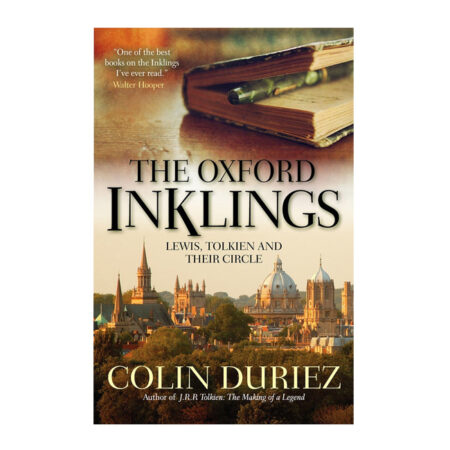
The Oxford Inklings: Lewis, Tolkien and Their Circle
£18.86 Get it from Amazon -
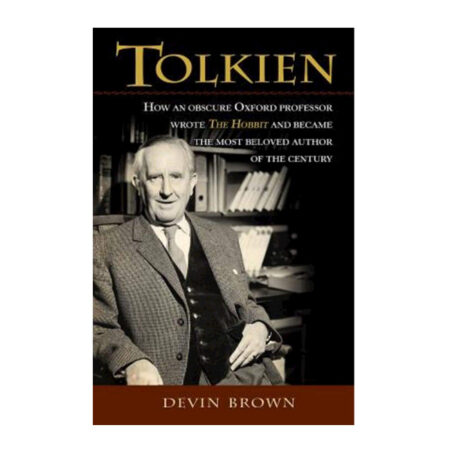
Tolkien: How an Obscure Oxford Professor Wrote The Hobbit
£7.36 Get it from Amazon -
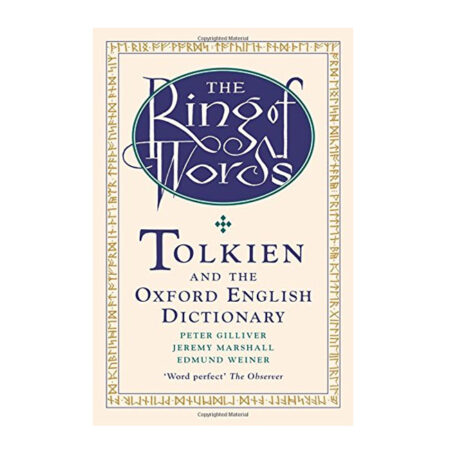
The Ring of Words: Tolkien and the Oxford English Dictionary
£22.83 Get it from Amazon -
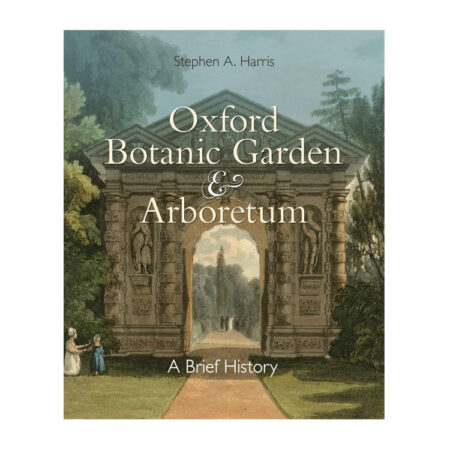
Oxford Botanic Garden & Arboretum: A Brief History
£19.67 Get it from Amazon
